In today’s episode I welcome you to the Museum of Non-Human Art, a brand new gallery full of art made entirely by machines, computers, algorithms, robots and other non-human entities. I hope your enjoy your visit.
Guests
- Elizabeth Stephens, Australian Research Council Future Fellow in the Institute for Advanced Studies in the Humanities at the University of Queensland
- Michael Noll, computer artist, professor emeritus at the Annenberg School for Communication and Journalism at the University of Southern California
- Ahmed Elgammel, director of the The Art & Artificial Intelligence Lab at Rutgers University
- Orit Gat, art critic & writer
- Xiaoyu Weng, Robert H. N. Ho Family Foundation Associate Curator of Chinese Art at the Guggenheim
Further Reading
- Do Androids Dream of Electric Bananas?
- Machines in the Garden
- Automata by Jacquet-Droz
- The Story of Jacquet-Droz
- When the Machine Made Art
- “Incredible Machine” (1968) — main-title animation sequence for award-winning movie by Owen Murphy Productions for the American Telephone & Telegraph Company.
- “Patterns by 7090,” by Michael Noll
- “Computer Generated Ballet” by Michael Noll
- Human or Machine: A Subjective Comparison of Piet Mondrian’s ‘Composition with Lines’ and a Computer–Generated Picture
- CAN: Creative Adversarial Networks Generating “Art” by Learning About Styles and
- Deviating from Style Norms
- Quantifying Creativity in Art Networks
- Large-Scale Classification of Fine-Art Paintings: Learning the Right Metric on the Right Feature
- A Computer Vision System for Artistic Influence Mining
- Tales of Our Time Exhibit at the Guggenheim
- Sun Yuan & Peng Yu: Tales of Our Time
Images and videos referenced in the episode
Robot satan! Images via Wikimedia Commons
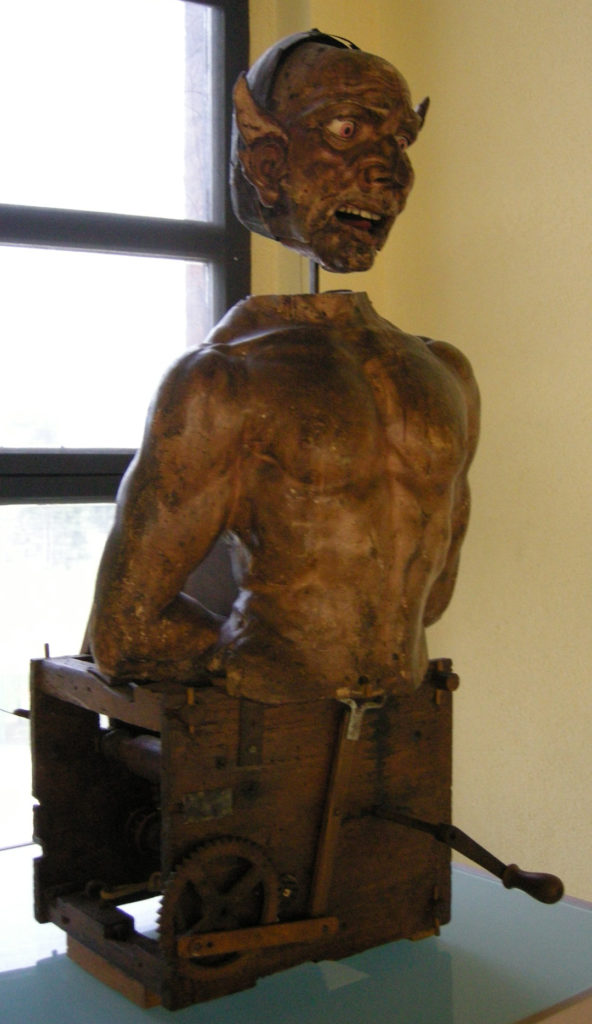
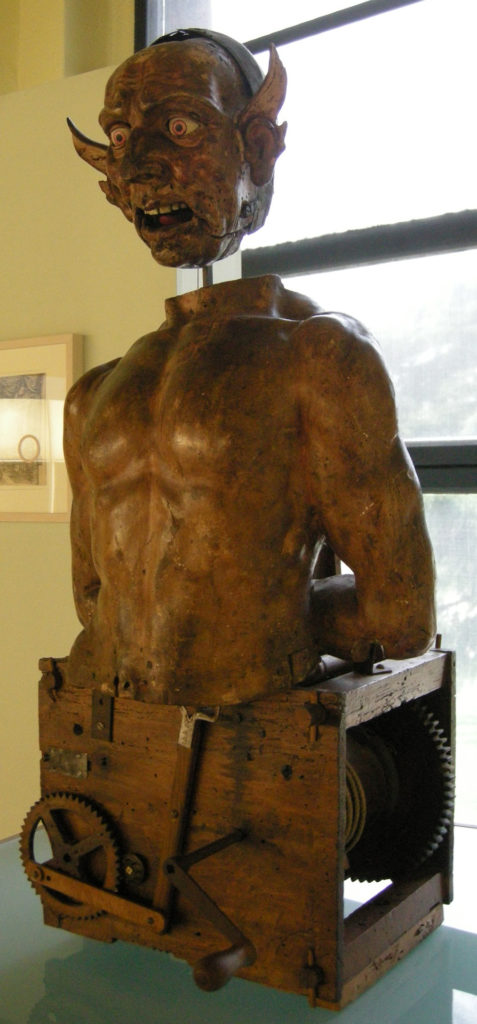
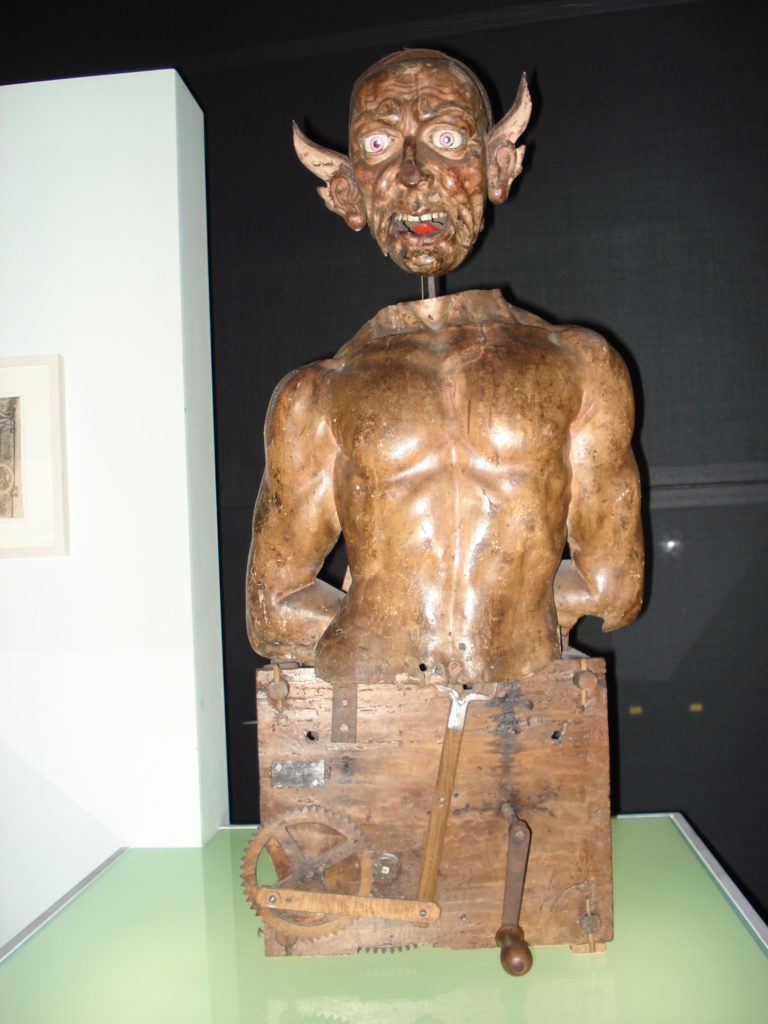
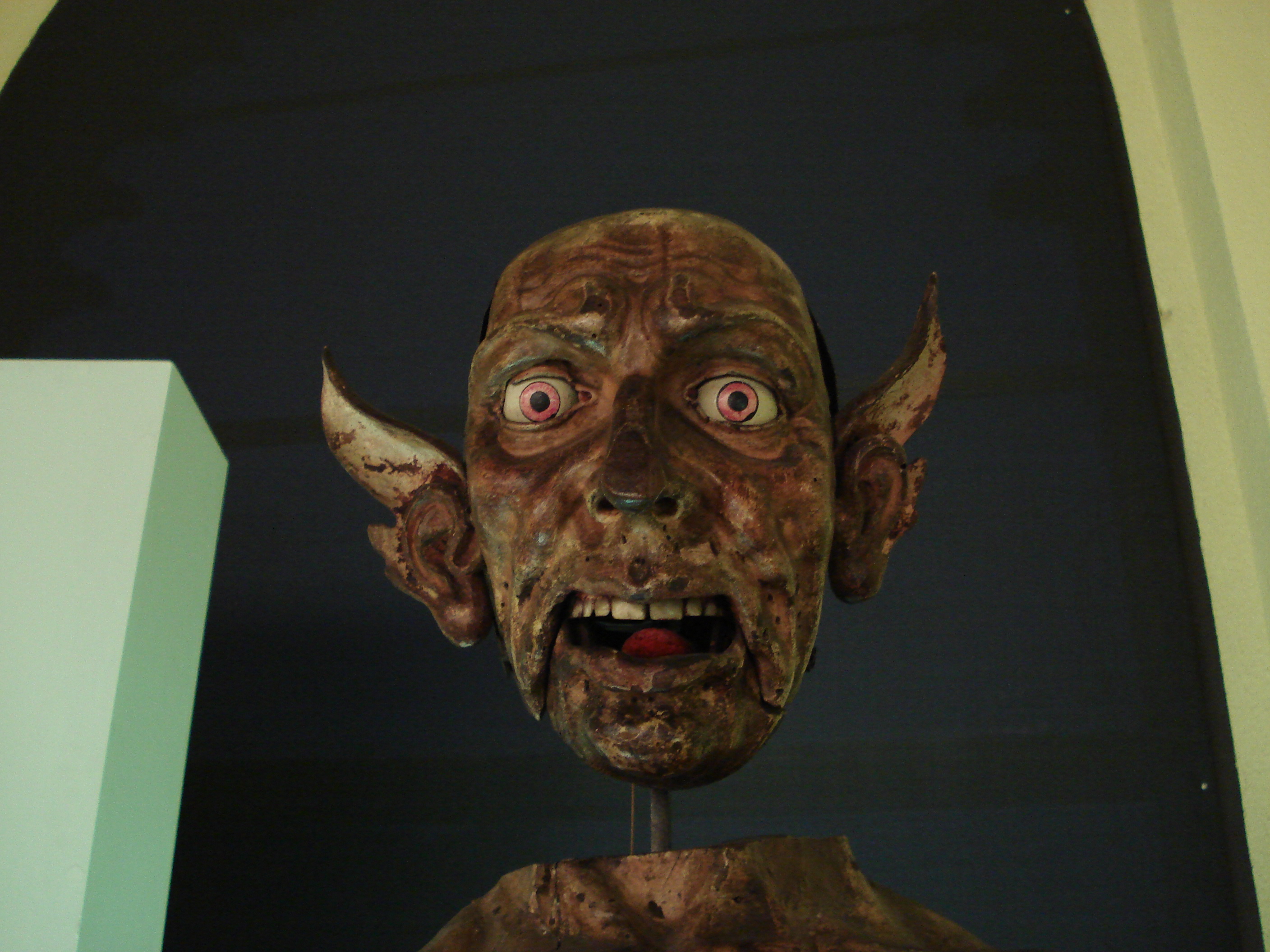 The Musical Lady and The Draughtsman by Jacques-Droz Images via Wikimedia Commons
The Musical Lady and The Draughtsman by Jacques-Droz Images via Wikimedia Commons
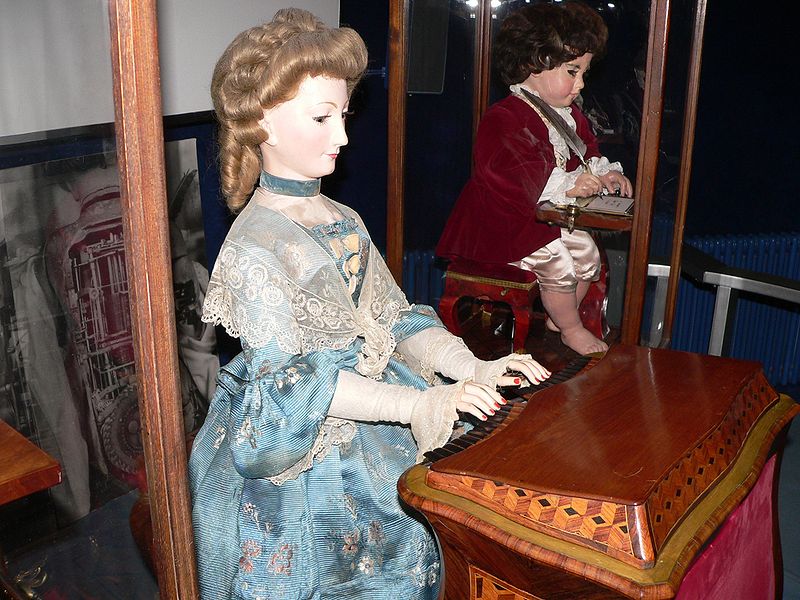
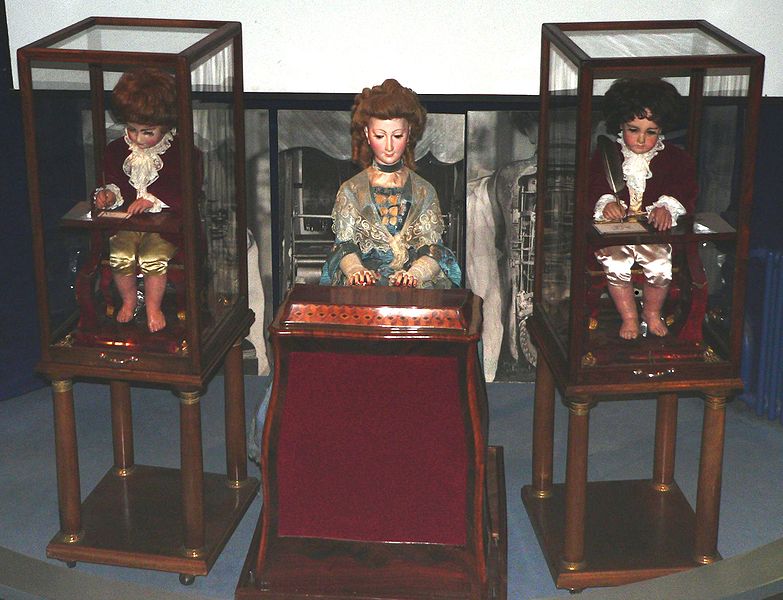
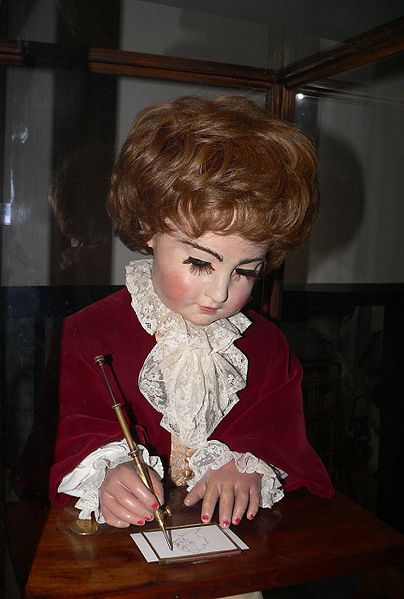
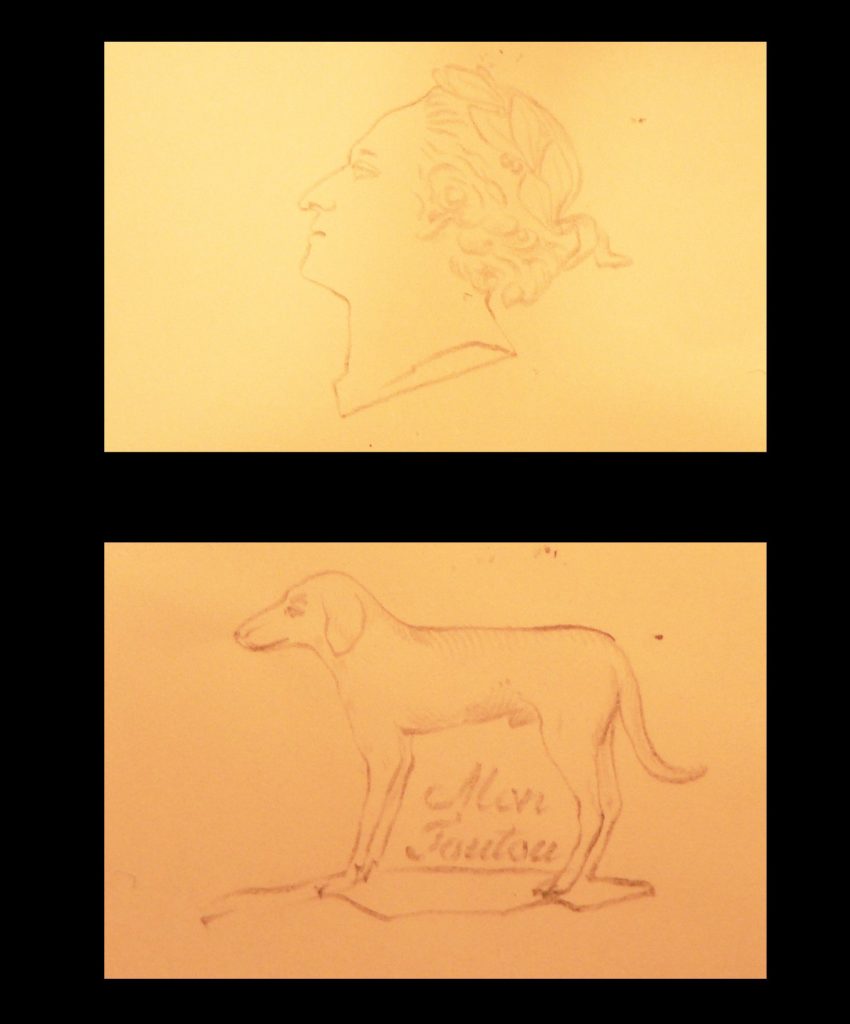
Patterns by 7090, Michael Noll’s 1962 computer drawings Images via Michael Noll
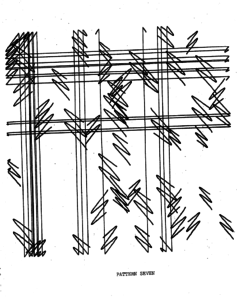
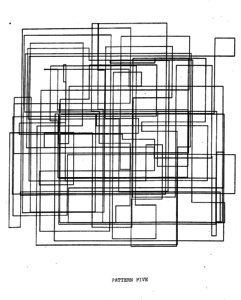
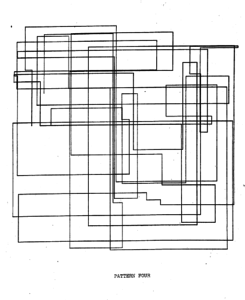
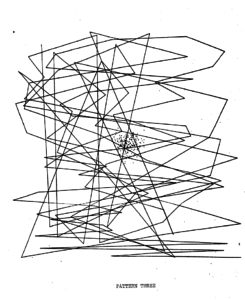
Mondrian vs Noll Images via Michael Noll
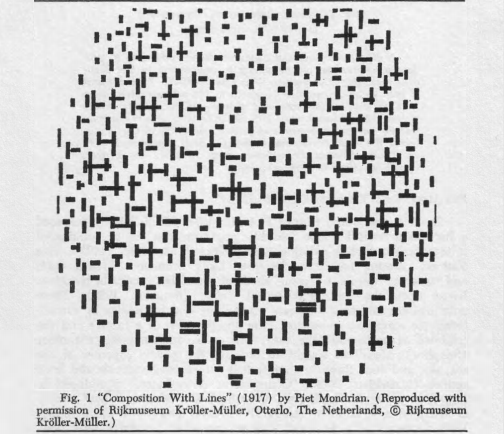
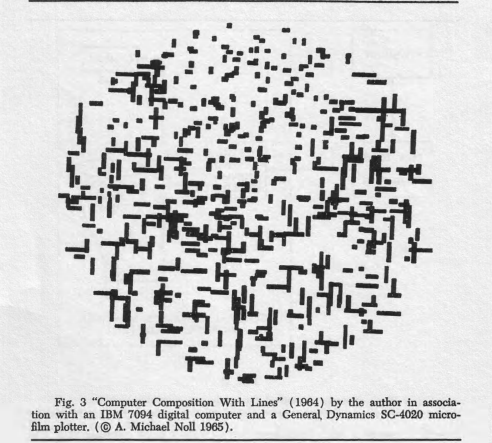
Images created by Ahmed Elgammel’s algorithm Images via Ahmed Elgammel
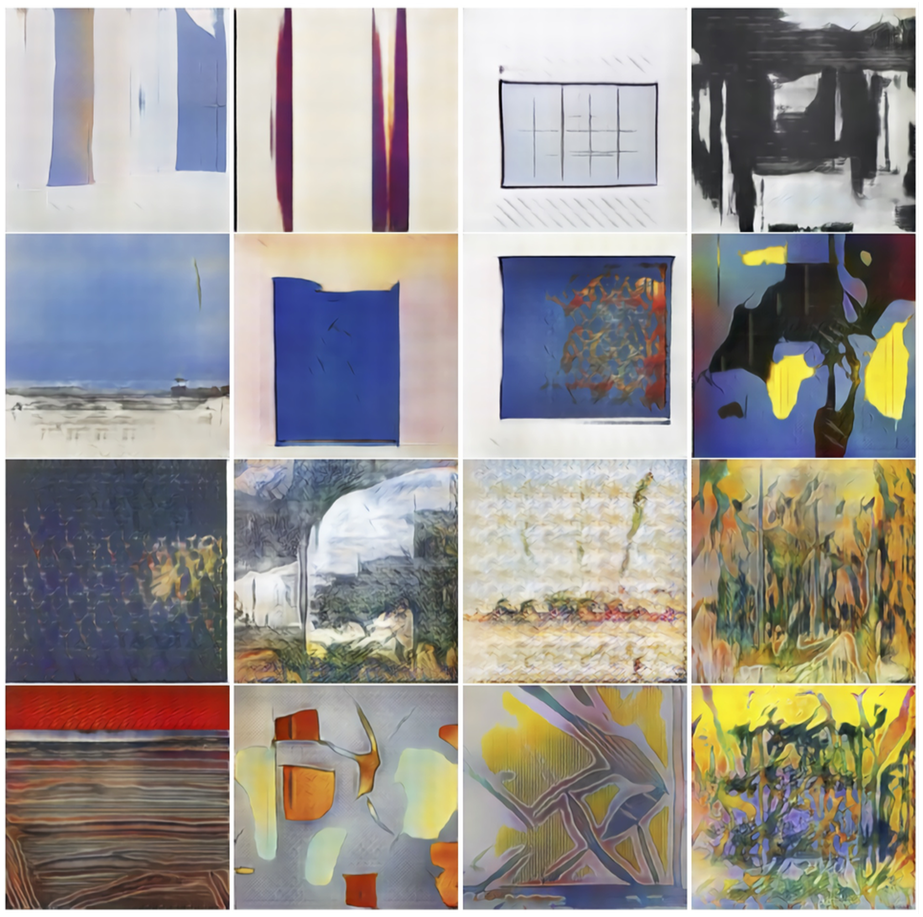
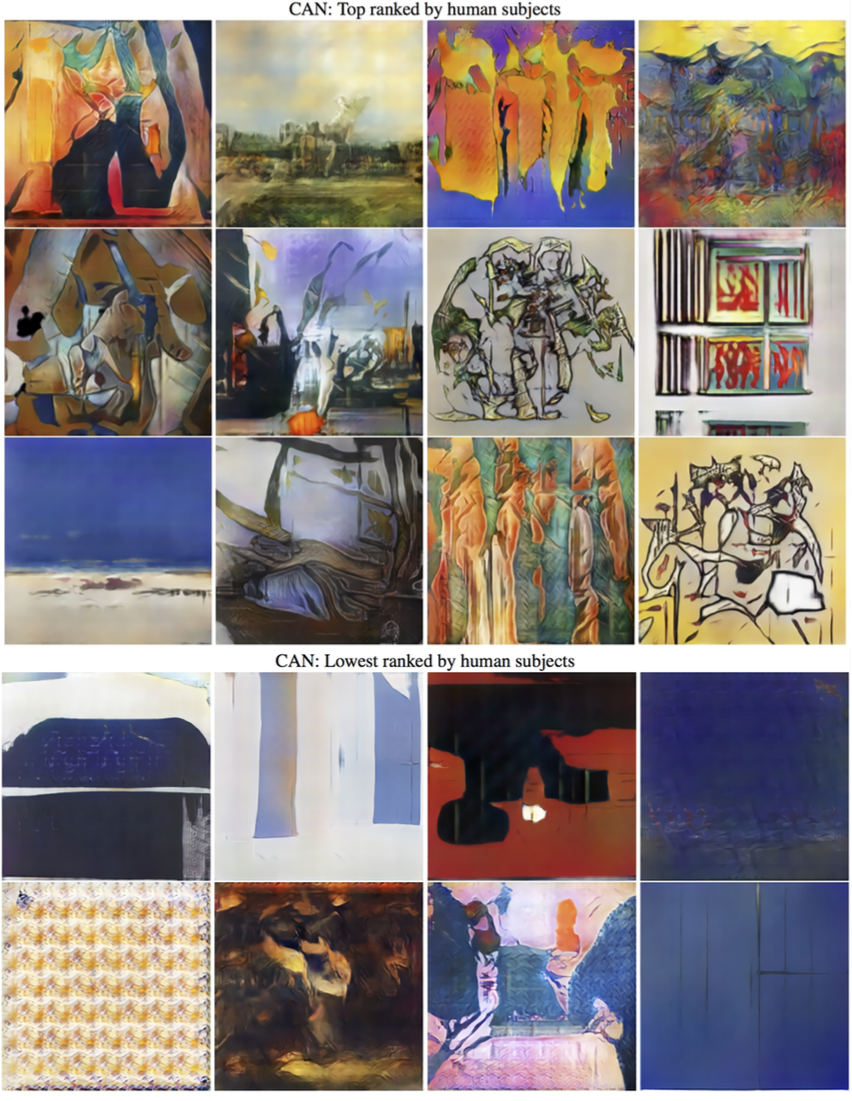
“Can’t Help Myself” by Sun Yuan and Peng Yu
Flash Forward is produced by me, Rose Eveleth. The intro music is by Asura and the outtro music is by Hussalonia. The episode art is by Matt Lubchansky.
If you want to suggest a future we should take on, send us a note on Twitter, Facebook or by email at info@flashforwardpod.com. We love hearing your ideas! And if you think you’ve spotted one of the little references I’ve hidden in the episode, email us there too. If you’re right, I’ll send you something cool.
And if you want to support the show, there are a few ways you can do that too! Head to www.flashforwardpod.com/support for more about how to give. But if that’s not in the cards for you, you can head to iTunes and leave us a nice review or just tell your friends about us. Those things really do help.
That’s all for this future, come back next time and we’ll travel to a new one.
FULL TRANSCRIPT BELOW
▹▹ ▹▹ ▹▹ ▹▹ ▹▹ ▹▹ ▹▹ ▹▹ ▹▹ ▹▹ ▹▹ ▹▹ ▹▹ ▹▹ ▹▹ ▹▹ ▹▹ ▹▹ ▹▹ ▹▹ ▹▹ ▹▹ ▹▹
Rose: Hello and welcome to Flash Forward! I’m Rose and I’m your host. Flash Forward is a show about the future. Every episode we take on a specific possible… or not so possible future scenario. We always start with a little field trip to the future, to check out what’s going on, and then we teleport back to today to talk to experts about how that world we just heard might really go down. Got it? Great!
This episode we’re starting in the year 2047.
[[Doors opening, museum sounds]]
Robot voice: Hello, and welcome to the Museum of Non-Human Art. I’m Magenta and I’ll be your guide.
The Museum of Non-Human Art was founded just last year, in 2046, as a museum dedicated to showcases the wondrous possibilities that arise when computers, robots, algorithms and machines of all kinds are given the freedom to create art. Here a the Museum of Non-Human Art we celebrate creativity, openness, tolerance, and generosity.
You’ll find the museum organized into four sections. The North Wing is dedicated to art made by and for robots. Some of you here are humans I see, so please be aware you may not be able to see some of these pieces and be careful to look out for signs so you don’t accidentally walk through an artwork. “Look Both Ways” for example, a piece by the artist Eleanor, is a piece based on the infrared signals that self-driving car systems use to process their visual input at night.
The South Wing is dedicated to algorithmic artwork. We’re very pleased to announce that we’ve just acquired several very early examples of such work dating back to 1962 by the artist Michael Noll. You’ll also find some of the first Deep Mind prints in that gallery.
The West Wing is our music collection. Humans, you’ll find headphones on the right hand side of the entryway. Bots, please have your bluetooth receivers on and accept an incoming connection request from MNHA_WEST. The music collection is my favorite, I must admit, so I do hope you enjoy that section.
And finally the East Wing is our rotating special collection. Right now we’re showing a of art made by humans in response to non-human art. You can reach that collection by going to the top floor and taking a left through the big double doors. This will be the first and last time the museum shows human art, I’m told, so check that out while it’s still on!
Okay, that’s all you need to know. Enjoy your visit to the museum, and if you need anything, please don’t hesitate to ask.
[fade out]
Rose: Okay so on this episode we’re talking about the future of art made by robots, machines, algorithms, computers, generally sort of all non-human entities.
You might have heard about computers making art at some point in the news. In 2015, a Google project called DeepDream got a lot of attention for generating a whole bunch of super trippy images. Writers at the time called the images produced by DeepDream “dazzling, druggy, creepy, psychedelic, terrifying and grotesque.” Slate said that DeepDream “feels like Google Images on Drugs.” A year later, in 2016, SONY had a computer write a song called Daddy’s Car. Here’s what it sounded like:
Daddy’s car clip.
Now let’s be clear about what you just heard — an AI simply wrong the sheet music for this. The lyrics were written by a human, and a human arranged the song. But it’s a start, right?
It can sometimes feel, when we see news about this kind of stuff, like this concept of machine generated or mediated art is totally new. But… surprise! It’s not. In fact, robots and art go waaaaay back.
Elizabeth Stephens: So one of the earliest pieces that I have seen is a piece of unknown date. Exactly. It’s probably the 15th or 16th century. It’s too fragile to be operated these days and it’s in a museum in Milan.
Rose: This is Elizabeth Stephens, a researcher at the University of Queensland who studies, among many other things, early examples of automata, which are basically self-operating machines. So before we had robots, and in fact before we even had the WORD robot, we had these little machines that could move around and do things, mostly powered by cogs and gears, like clocks. These kinds of automata have been documented going all the way back to the 13th century, when a guy named Ismail al-Jazari published an incredible book on how to make them. Eventually his techniques would be used by Europeans to make their own automata. But none of the physical automata from al-Jazari’s era survived, so the earliest one that Elizabeth has seen is this one that she was just talking about from the 15th or 16th century. And it is… pretty weird.
Elizabeth: It’s a it’s a robot Satan in effect. So it is it it’s delightful.
Rose: You didn’t think you were going to hear about a robot satan when you started this podcast I bet!
Elizabeth: He’s a rather buff so it has to be said he’s quite muscly in the torso and his arms are quite muscular as well and it is thought that his chest panel is actually manufactured out of a early statue of Jesus which is very interesting from a religious standpoint but it has been repurposed for a Satan. He has an appropriately devil looking head. He has some horns. He used to have a collar and a neck but that no longer exists. And he has a tongue that pokes out. That’s that’s one of the you know the kind of automated parts of Satan. So here’s his role in churches was they would often be in a sort of entry way arm of the church so that people would see them as they came in. He has a voice box which is no longer Ivan completely no longer functional or too fragile to be operated. But the idea was in his original form he’s on wheels as well instead of legs is that he would roll backwards and forwards he would poke his tongue out at the crowd his eyes rolled around and he made a roaring sound at people.
Rose: Don’t worry, I’ll post a picture of the robot satan on the website, flashforwardpod.com, so you can see what he looks like.
Elizabeth says it’s hard to really tell what people at the time thought about something like our super buff robo-satan. They might have been totally terrified of it, and truly thought that the devil had possessed a statue or something. Or they might have found it totally hilarious and delightful!
Elizabeth: People go in to funfairs these days and go into haunted houses and go on ghost trains because they find that amusing and funny not because they’re genuinely scared. I don’t think we should rule that out.
Rose: This robot satan is one of the earliest examples of these automaton, and you probably wouldn’t say that super jacked robo-satan is creating art. But a few centuries later you get another, related piece of work that’s a little bit more complicated. In 1770, a French craftsman created a piece called the Musical Lady.
Elizabeth: So she sits in front of a small keyboard. She’s wearing a nice frock, sitting in front of her her keyboard and if you pull the frock up at the back what you see are a series of very complicated, handmade, extremely fine — there’s hundreds of them — cogs and gears. So when the Musical Lady is brought to life and begins to move several things happen. Her fingers are articulated so the fingers actually press the keyboard. So when you hear the music she is actually playing the keyboard. She’s not a music box like a lot of 19th century ones are.
Rose: Here’s what she sounds like in action, the French voice you hear is the curator of the museum where the Musical Lady now lives:
Jacquet-Droz YOUTUBE CLIP [fades out under Elizabeth]
Elizabeth: As she plays her eyes move across the keyboard so she’s following her fingers and the music as she plays, her head moves so she’s also turning to look at the audience and she also has a panel in her chest that moves up and down as well onto her clothing. So she looks as though, not only as though she’s breathing but also she’s being moved by the music that she plays. It’s quite extraordinary and uncanny to see.
Rose: The music that the Musical Lady played was actually composed just for her.
Elizabeth: His son was a composer so he made the pieces and they were only ever performed by the musical lady. They were never performed by humans
Rose: This was the time of traveling shows like this so the guy who made , so Jacques-Dros, the guy who made this automata, would take his Musical Lady and other automaton all around Europe to show them to people.
Elizabeth: You know there are whole businesses of people who are crisscrossing across Europe with all kinds of technological novelties of various kinds. Peep shows for instance were very popular. They were little boxes that you would look into and they would have these little diorama or various things you know in there. They were a whole range of technological visual novelties that are being exhibited all over Europe.
Rose: And the Musical Lady was one of the most impressive pieces of work that people had ever seen. They were totally blown away by the Musical Lady, and the other automata that he had created.
Elizabeth: So what people said in the 18th century when they would see her was oh my God that’s amazing is she alive. And so whatconsumed everyone was not who wrote the music and whether what she was producing was art. It was that she seemed to be alive that was 100 percent occupied the public response to her work.
Rose: The reason people wondered if she was alive isn’t because the Musical Lady is so visually human like, she’s not like one of those super realistic humanoid robots we see today that are pretty creepy. They aren’t asking if she’s human, exactly. But in the 1700’s, when Jacques-Dros was making these proto-robots, philosophers of the day were in the middle of a really heated battle over this question: what makes something alive?
Elizabeth: There was a philosopher of the period La Mettrie today who wrote a book on the subject called Man a Machine and the subject was: Does human biology operate mechanically according to a regulated system. And if so can we understand life itself as the result of a series of mechanical processes.
Rose: Philosophers like Descartes spent a lot of their time thinking about the nature of movement. They thought that perhaps the ability to move required some kind of outside force, some kind of divine or vital spirit. Today we know that the ability to move is in fact really a mechanical thing. But again at the time this wasn’t an accepted idea. So you have these philosophers who thought that the ability to move was what made something alive, because that something was being animated by a divine vital force. And then you showed these philosophers this Musical Lady, this robot that could move on her own, and could play the piano on her own, they kind of freaked out.
Elizabeth: People like La Mettrie for instance when he was writing philosophically about whether or not biology was mechanical ended up having to flee the country that he was living in, the Netherlands, and go on the lam in effect because what he was saying was so contentious.
Rose: The point here is that robots, or robot like things, have been involved in art for a very, very long time. And like any other pieces of art they’re a product of their time, and have long been forcing people to think about the nature of both art, and humanity.
Even computer art, art mediated by computers specifically, is nearly as old as computers themselves. Pretty much as soon as computers were invented, people started using them to make art.
Michael Noll: I did my digital computer art, programmed, first in 1962 but before then when you said computer people always put an adjective in front of it. Was an analog computer or digital computer? Nowadays it’s a computer and people immediately, it’s a digital computer period, but back then most computers were analogue.
Rose: This is Michael Noll. He’s retired now but he used to be a computer programmer at Bell Labs in New Jersey.
Michael: That summer at Bell Labs in 1962, a colleague was using the computer and the graphic output device the microfilm plotter and something went wrong with his computer program. So what came out of the plotter was just lines going every which direction. It was just a mishmash of things. It looked quite crazy and abstract and he sort of jokingly said “oh! computer art hahaha.” And I heard him said “no let’s do it seriously.”
Rose: In 1962, computers were huge. You couldn’t just have one in your house really.
Michael: Unless you have a large warehouse and major electricity and air conditioning and the fortune to buy one then you can have one, yes.
Rose: But Michael had access to these gigantic computers at Bell Labs, and he used them first to create pretty basic line drawings.
Michael: There was you know using a digital computer and programming it in the language of choice back then which was Fortran and used numbers and used um various little sub programs that created numbers that look random to human beings then feed them into the machine. I made these interesting looking, maybe you’d call them patterns. I certainly had no problem calling them art, and I could play with the parameters and the computer could make 20 or 30 versions on the same theme. I could look at them and say which ones I liked or then decide to tweak some of the aspects of the program to tweak it to something more that I liked and that’s what I was doing.
Rose: Then, Michael got interested in seeing if he could make something more complicated.
Michael: I was in New York City with a friend at the ballet and I was watching Stravinsky’s Apollo and the interaction between the dancers on the stage and I thought maybe make a little stick figures to do the same thing and the computer could then be used as a tool by the by the choreographer to sort of create imagery and and then make a scores that could be given to the dancers to follow. So that got me interested in doing the computer generated ballet.
The computer generated ballet actually caught the attention of the BBC, who flew out and did a whole segment on Michael’s work.
BBC Narrator: As a computer expert, he was well able to translate his ideas into a computer program.
Michael Noll on BBC: Of course the really essential part of all of this is the computer program, which enables the individual to communicate his intentions to the computer. For instance, in the computer program to make the computer ballet, which I have here, the first part of it is concerned with setting up the instructions for drawing the stage on the automatic device that produces the pictures. The stage is shown here as consisting of 600 units on each sides ….
Michael Noll: the fact that he the producer was courageous enough to actually explain a computer program and show Fortran instructions on screen is incredible.
BBC Narrator: The completed program is transferred onto magnetic tape, and the tape in turn transmits the program to an automatic device which produces the images. These are displayed on a cathode ray tube.
Rose: So Michael was creating all these interesting pieces using these really early computers, and he started to wonder if he could actually create art that was more algorithmic, art that a computer learned to make itself.
Michael: Mondrian had a certain period where he was doing things that had to do with water and piers and shapes and water and that culminated in a very abstract piece called “Composition with Lines” which were circular with a tear shaped portion at the top. So I took that looked at and said “Gee I could turn that into an algorithm” which I did, and then let the computer go often using programs that calculate numbers that looking random to us make its version. So now I had two versions.
Rose: So he took these two versions of the same concept, and he started showing them to people, without telling them which one was made by a human artist, and which one was made by a computer.
Michael: Which one do you prefer people didn’t know which was which. Anyway majority of the folks preferred the computer version.
Rose: I’ll post images of both of those pieces on flashforwardpod.com so you can go look at them side by side. Michael even had a gallery show in New York, showing this computer art.
So even this idea of algorithmic art, somethings that’s in the news today all the time, it’s not new! Nothing is new! But… is it art? That’s kind of the big question here right? And we’re going to come back to this question a lot in this episode so let’s start answering it by actually going back to the Musical Lady. Is she a musician? She’s playing music, she’s creating music, using her little robot fingers. You heard the music, in that little clip. But is she in fact an artist? Is she creating music in the way that a human playing those same notes on the same piano would be?
Another one of these automata raises a similar question.
Elizabeth: The writer for instance is her companion, one of the companion pieces. And the writer does pictures, and he can be programmed to do a range of different pictures. I’m actually into write sentences as well. One of those sentences is I think therefore I am which is rather delightful.
So when The Writer draws you a picture, is the drawing art?
Elizabeth: One of the pictures that he draws. He drew this for me is a picture of a dog. Now if I draw a picture of a dog it would look worse for one thing than the writers does. But also we’re undergoing a range of similar practices and that is we both have pre programmed mine in my brain, him in his cogs, what a dog is accepted to look like a generic dog you know rather than an individual dog might look like. And then we’re reproducing that as I said him with more accuracy than
Rose: Many people probably have this gut feeling that no… the dog he draws isn’t art, because he’s just following a code he was given. But Elizabeth argues that even if the Musical Lady isn’t really a musician, and the Draughstman isn’t really an artist, there is still art… happening there.
Elizabeth: If the art is in the affective interaction between the performer and the human listener then I think that we can say that art is something produced in the space in which the Musical Lady plays. It’s not the Musical Lady necessarily that is the artist, but art takes place in that room because there’s a strong affective bond that’s formed between the people who are listening and the person who is performing.
Rose: So what makes someone or something an artist? Do they HAVE to be human? Is it just impossible for a machine to create art? Often the response to this question circles around the idea of creativity.
Elizabeth: If what creativity consists of is adding a certain percentage of novelty or innovation in to a practice or into a system that itself is quite regulated. So music for instance has to adhere to a range of different criteria in order to work within its genre, in order to work as being a musical piece. And what most musicians do is innovate or change that just enough to sound new but not enough that people don’t actually enjoy listening to it. That can probably be programmed as well.
Rose: And she’s right, actually, that CAN be programmed. And here’s the guy who’s done it.
Ahmed: I fully believe that advancing artificial intelligence requires that we look at problems related to creativity, human creativity. I am Ahmed Elgammal I am the director of Art and Artificial Intelligence Lab at Rutgers.
Rose: And when we come back we’re going to talk about Ahmed’s algorithmic artwork, and what a museum of this kind of work would even look like. And, we’re going to hear from some listeners about whether they think that computers can make art.
But before we take our quick break, I recently asked Patrons to record their thoughts on this question: can computers make art? Here are two disagreeing answers!
Sameer Ajmani: Hi Rose This is Sameer Ajmani recording my thoughts on whether computers can create art. So the first time I started thinking about this question was back in college when Douglas Hofstetter came to my university and gave a talk about a system called EMI spelled E M I and he was a computer program that could generate classical music pieces in the style of famous composers. And the demo, he explained Professor Hofstetter explained how the system worked and demonstrated it by having a live pianist play pieces by Bach and then pieces generally by EMI and they showed how an older version of the program you could pretty much tell the computer generated piece was kind of repetitive didn’t have a lot going on. But by the end of the lecture the you know you had the pianist play both a piece by a composer and a piece by EMI and asked the audience to vote which one was a real one and were split 50/50. The audience couldn’t tell. And so this was really convincing really compelling. Great. Computers can generate music.
But later as I sort of learned how this kind of generative music is created you realize what it’s doing is it’s learning the machine is learning patterns in the music and then using that to generate new pieces. So it’s not really creating, it’s more, not in the original sense, it’s essentially remixing what humans have already come up with and that doesn’t really feel like original art. It doesn’t feel like it. Not yet not something novel not something that captures the spirit. So those are my thoughts.
Luke: Hi Rose answering your question of can computers, robots create art. Yes of course they can. Art just requires some agent behind it. And once we can ascribe some agency to robots, computers they can make art. We can talk about some dunes in the desert being beautiful and magnificent and the shapes being splendid, but until we think of some creator some agent behind them we wouldn’t call them art if a graphic designer is just following a recipe and putting together an ad for Pepsi that’s not going to be art. But if they are creating their own elements and exacting some agency on the Pepsi ad then they are creating some art. Art requires an artist. So when computers are creating things that they weren’t specifically told to create that’s art. And I guess that happens both in bugs that make up computer systems and definitely in deep learning. Thanks for listening. This Luke Gliddon, is good bye.
Rose: Thanks you guys! Those were both really interesting takes. Okay, now a quick break, and then we’re going to talk about Ahmed’s algorithm.
[[ADS]]
Rose: We’re back! So let’s go back to Rutgers, where Ahmed has his algorithms making art. Basically what Ahmed wanted to do was figure out if he could train an algorithm to be creative, that is, to look at a whole lot of art, and then generate something brand new that nobody had seen before.
So first they fed the algorithm images from the history of art.
Ahmed: We physically show images of art, Western art in particular from 14th century all the way to year 2000 basically basically. So five centuries worth of data from art history, ultimately about 80000 images.
Rose: These 80,000 images came from the publicly available WikiArt database, which means that they were pretty heavily biased towards Western Art, since that’s what the database mostly has. And 80,000 is a big number, but when you think about how much art that humans have produced over the centuries, it’s really not THAT much. So that’s one limitation here.
But the algorithm gets all these pieces of art, it looks at them, and then it produces new work. And the algorithm in question here is what’s called a generative adversarial network. We’ve talked about these before on the show, back in the episode called Unreel which was all about a future in which anybody can generate fake videos of people doing pretty much anything.
But to refresh your memories, an adversarial network is a network that basically competes against itself, that’s the adversarial bit. One half of the algorithm generates something, and essentially tries to get the other half of the network to believe that the thing it has generated is new and good enough. The idea behind most of these adversarial networks is that there’s no human involvement, the algorithm is continually improving itself.
Ahmed: It’s like a game between two plays, one player who has a data and hides it, doesn’t show it to the other player and the other player has to guess what the data looks like.
But Ahmed tweaked his network to do something a little bit different than the traditional adversarial networks.
Ahmed: What we did was a modification to this to make it more creative, because just generating data will not be able to generate art, because art is not about just imitating what happened before. That will not be art. We believe art art has to be novel. You have to make new art every time. so if you give the machine lots of images of art from art history and it’s goal is just to generate similar images this will be called art is called emulation of art.
Rose: The key thing here though, is that you don’t want the computer to go TOO far in the new direction. Because if it gets too far away from what people are used to seeing, it might not make something that people like. So the game that Ahmed had this algorithm playing with itself was basically designed to make the output just a little bit new, not too new, not too out there, but new enough that the output felt interesting and fresh.
Ahmed: So the machine is under two opposing forces. One force that will push it to make novel things, doesn’t fit existing style. But the other the other force will pull it back, not to go very far away from the aesthetics that appeared in art history. So as a result the machine sort of generates very interesting images. You can see right away that the machine learned aesthetics, so it chooses good colors, good composition, color contrast between foreground and background.
Rose: Again, I’ll post the images that the algorithm put out on flashforwardpod.com if you want to see them. They’re really interesting looking. I actually really like some of them.
And in fact, Ahmed decided to put these images to the same test that Michael did: could people tell that they were made by an algorithm or not? To figure this out, he showed people a mixture of images — some generated by his algorithm, and some created by human artists and shown at a big art show called Art Basel.
Ahmed: In general people cannot have difference if you ask any question about whether this is done by the machine or done by a human artist, they won’t tell. But also when you ask them to describe the work, whether it’s intentional, whether it has visual structure, whether it’s communicating to you, whether it’s inspiring to you to certain degrees, people rated the artwork done by the machine at the same level or even higher than the ones done by humans. So if you as a human look at an artwork and describe it as inspiring or as communicating, then basically you see it as art, you don’t see it as something that’s happened at random, you receive it as art.. And that’s basically the way we concluded that the machine succeeded in making visual forms that we we actually see it as art.
Rose: Now, there are a couple of things I want to highlight about the algorithm here. First, it pretty much NEVER puts out art in the style of, say, a Renaissance painting. Because it’s designed to try and do something new, it’s never going to create a painting that plays with or satirizes older styles. Which is something that some really incredible artists do right? They take an older style and do something to it to make a point.
So for example, Kehinde Wiley, who you might know as the guy who painted Barack Obama’s presidential portrait, has a whole series of paintings where he places black bodies into more old school styles, so like Michael Jackson riding a very classical Napoleon-esque horse, or a black man holding a child styled like a Catholic stained glass window. Nodding back to these styles to make a point is not something that Ahmed’s algorithm is ever going to do.
The other thing I think is interesting to bring up about Ahmed’s work is that we actually have no idea how the algorithm is processing the art that its fed and coming up with the resulting images. This is one of those really weird things about some kinds of algorithms, they’re essentially black boxes. Ahmed doesn’t know what the algorithm is doing when it looks at the images its being trained on, nor does he know how it recombines that information to create what it puts out.
Ahmed: That’s an interesting thing. I mean we don’t know exactly how to break it down. The only thing that we know is we give all this volume of images and styles and it starts from random and it tries to read or simulate that and then starts to generate at that doesn’t fit into that. What it actually generates or actually learn that is really difficult to encode.
Rose: And in some ways, that actually makes it kind of like humans right? Human artists look at a lot of art, and that kind of marinates around and helps them create their own pieces. But they probably couldn’t break down for you exactly how they came to the thing they did, exactly which pieces they pulled and recombined from the past stuff they saw. Just like Ahmed’s algorithmic outputs, it’s always kind of a surprise.
Ahmed: I’m always surprised with what the machine generates because I press a button and I never knew or expect it will generate next. That’s the best thing about it. That’s when I felt that it makes art because I have no way to expect what I get next.
Rose: Okay, so at this point we’ve talked about a lot of different kinds of art made by algorithms and computers and such. But at the top of the show, you heard a tour guide giving a tour of a museum full of this art. Which means that curators and critics have decided that not only is this stuff art, it’s art worthy of putting in a big fancy museum. So I wanted to know from actual curators and critics, how they think about these kinds of pieces.
And it turns out that art critics aren’t actually all that different from art algorithms after all.
Orit Gat: So the first thing that comes to mind as you were speaking and I haven’t really thought about much until now was how much I have in common with machines and algorithms because basically to me the first thing that happens when I walk into a museum or a gallery or any exhibition is that it brings to mind things that I’ve seen before, right? The job of being an art critic is just to have a really strong visual memory and to have seen a lot of art and to know that that visual background is what allows you to judge things to contextualize them to think about them in relationship to the history of art, in relationship to what other people are making right now and their relationship to what is happening in studios around town.
Rose: This is Orit Gat a writer and art critic based in London.
Orit: And like, I’m trying to think about the kind of things that algorithms produce and what they produce is something that came from analysis of other images which is not exactly how I think of art making traditionally but is how I think about art criticism.
Rose: And one of the big things she said matters to her, as a critic, is thinking about the context of the piece at hand. So we talked about those 1770 automata, and how they were inherently connected to the philosophical debates of the day. But it’s not just those pieces, you can say the same for Michael Noll’s work at Bell Labs.
Orit: The computers that he was using were used for really specific things. And whatever it is like whatever it is, whatever drawings he could make out of them. Those computers were also designed to test out atomic bomb responses. If the artist is the algorithm itself or the robot itself or the person who built that algorithm and robot and then kind of release them to be obviously replicates some kind of traits of human traits of the people who design them and those human traits are often the ones at the corporation who had the funding to design it.
Rose: This is how curators think too, they’re not necessarily just interested in what a piece of art looks like, they’re also asking what it says and what it’s interacting with. Like how the Musical Lady was connected to philosophical discussions about the nature of life.
Xiaoyu Weng: So for my practice and working with artists one very important thing is how can we get out of this box of imagining what is technology what are the other possible futures that might unfold. And what’s the relationship of technology and history and what it was historically.
Rose: This is Xiaoyu Weng, a curator at the Guggenhiem in New York City. Xiaoyu was responsible for commissioning a piece called “Can’t Help Myself” which was displayed at the Guggenheim as part of an exhibit called “Tales of Our Time” full of art all about the concepts of place as interpreted by Chinese artists.
Xiaoyu: We’re looking at rethink the ideas of geographic boundaries and how do you define a place, and this place of course is what we were talking about as to Greater China. And how do you understand it whether it is a geographic concept or a cultural concept or is it a place or is it somewhere remote in the “far east” as we used to call it.
Rose: Can’t Help Myself was a big installation piece that engaged with these ideas of borders and surveillance and mechanization.
Xiaoyu: programmed and conceived and realized by the artist duo Sun Yuan & Peng Yu based in Beijing. There are a couple. They have been working together since the 90s and they also have their independent practice but also make works as a collective. The artist was interested in how sort of the concept of surveillance and how nowadays we are always under constant surveillance and supervision by not our fellow human beings but by these machines and digital technologies. So the robotic arm was served as a metaphor in commenting these issues of border control and surveillance.
Rose: So, we’ll describe the piece but again I’ll have images and a video of it on the website.
Xiaoyu: So in the museum you will see it was situated in a glass container. But just imagine it’s a giant glass container and the structure was from floor to ceiling and the machine was inside of it.
Rose: In the middle of the glass box is this huge robotic arm, like something you’d see on a factory floor or in an assembly line.
Xiaoyu: And then there was a puddle of liquid on the floor in the museum gallery. And the color mimics the consistency and the color mimics blood. But of course it’s not real blood, it’s a chemical composition that the arts came up with, our conservator, we worked on it together.
Rose: When the piece begins, this red liquid starts to spill out from the center, where the arm is. And up in the ceiling, there are two little sensors that basically watch the liquid spread.
Xiaoyu: So that the sensor kind of monitors whether the liquid spills over the boundary or not. And as soon as it goes over this boundary the machine will be activated to shovel it back within its contained territory.
Rose: At the end of the robotic arm is kind of like a big squeegee. And when the robot isn’t corralling the blood around the container, it has some preprogrammed movements that it does.
Xiaoyu: So the machine is kind of doing this very strange, bizarre dance in the gallery. And like I said, when the liquid spills over the movement would be switched from this dance to shoveling the liquid back.
Rose: Essentially it looks like this gigantic robot arm is squeegeeing blood and then dancing about it.
Xiaoyu: There is this very haunting kind of psychological facts because it’s as if you’re looking at some giant animal and of course there is this very intimidating feeling. But in the meantime everything is in full control because there’s this separation between the machine and the human.
Rose: And getting this robotic piece into the Guggenheim was actually a pretty intense technical challenge.
Xiaoyu: They tested it in China and the machine that later was shipped to the United States. Then we actually had to install a very specific anchor underneath the machine in the museum because it’s so heavy. We just need to stabilize it. And also make sure the floor can hold onto the weights because Guggenheim is a landmark building and historical architecture. So it is a challenge also for us to figure out all these engineering details.
Rose: In fact, the conversations about this piece, and how to build it, and how to make it safe in the building, were kind of these meta-explorations of some of the things that the art itself was trying to highlight.
Xiaoyu: It was interesting when we first started to talk about the piece when the artist brought it up and was saying we would love to use the robotic arm, the exhibition management service team from the museum immediately raised a lot of questions in terms of how that could be a malfunction and there could be mistakes in the program that potentially or you know theoretically something could happen. And that also sort of I think morphed from a technical question to a very interesting philosophical question. So I’m more interested as a curator, and I’m sure from the artist perspective, the psychological kind of reaction and the effect that the work had not only on the visitors but also in the institution in the museums and people who are working on these projects.
Rose: I think this is really interesting — because it kind of gets at the premise of this episode right? We have a museum that opens up for non human art. But the way that museum is constructed is going to say a LOT about the art itself, and is in itself almost a piece of art. In fact, Xiaoyu thinks that thinking about this fake museum of ours, is actually better in theory than in practice.
Xiaoyu: I think a museum of you know machine made art or kind of these algorithm based art is itself much more interesting as a concept to them perhaps the result of it.
Rose: And I think she actually might be right. Orit said some similar things too. Like, when we think through the specifics of this museum, it starts to get really weird. Like, can we even evaluate and judge art made by non-humans?
Orit: It’s totally possible that in this museum of human or non-human made art that you’re describing the work made by the algorithm is something that just like the work of the algorithm we can’t understand.
Rose: When us humans are standing in the museum, and looking at a piece that the machines made, can we even really get what’s going on?
Orit: If the result ends up being something that looks like the Deep Dream images and so we recognize that it starts with one image and it’s been trained to see cats and then it creates this crazy image of like a landscape with a thousand cat eyes and it’s like haunting and quote unquote dreamy and weird. Part of that is that we try to explain why it did that and like we fed it specific information that was trained to look for this information. But in the machine logic that could be a masterpiece.
Rose: One of the things that has to happen, with, say, Ahmed’s algorithmic output is that a human then eventually picks out which pieces they want to show people and display from the output. That’s for a couple of reasons of course, but one of them is purely computational: we humans couldn’t actually process or look at all the images the machine can make. But that’s a human problem.
Orit: Only the human visitors need this selection. The machine visitors could sense more information so they could see all of the output where the inferior ones.
Rose: So in theory you could have a museum that actually DOES show all these images, it just doesn’t show them to US. And then there’s the question of who even picks the pieces to begin with!
Orit: You would say that there would be two versions of curating in a museum like that. One would be purely algorithmic somehow like you would build an algorithm that would also curate the exhibits. And the other would be of a curatorial I guess team or direction which… I mean part of the thing about an exhibition is that bringing works together is meant to make meaning right. It changes the work if you’re going to an exhibition and you see more than one work on view. Somehow they make context for each other. So what is it like. Do you bring the work of say a computer and a robot at the same time do they see in the same way. Is this something that the exhibition space can explore somehow by just looking at these works at the same time.
Rose: And who writes the labels for these pieces?
Orit: How do we develop a language around a museum where nothing was made by humans
And how do you make sure you’re even reproducing the work properly.
Orit: If you’re going to print then you’re relying on a human eye to make sure that the color matches and things like that. So like are you going to build another machine that then assesses the prints and compares them to the digital files.
Rose: Eventually, Orit wonders if the machines themselves might become their own art critics?
Orit: That’s also why I’m so interested in the Hsin vision like these machines pay attention to what they look at and if we just taught them enough they might. Their analysis might become critical.
Rose: During our interview I showed Orit the highest and lowest ranked images that came out of Ahmed’s algorithm. And her reaction was kind of surprising to me.
Rose [on the phone]: I’m interested what you think of these worse ones.
Orit: I’m interested in the ranking of it. Since that’s my job basically. I think the lower ranks ones are much better.
Rose [on the phone]: Really?
Orit: Yeah. Oh that’s funny.
Rose: So much of this fake future museum assumes that humans are going to be able to accurately see and think about images made by machines that were made by humans probably to do something else. It’s like this weird kaleidoscope where we create something to create something and then try to create a system to judge that something when in fact it might have already gotten away from us. So if we did want to build a museum to house the “best” or “most interesting” non-human art, we’re kind of engaging in this weird upside down world of work that we made but that wasn’t necessarily made for us.
Orit: The point of it will be to ask a question about why we see what is it about human intent that we see and she made things and that is really telling like that I think much more significant than the question of fooling people is the question of why do we want to see ourselves in something that has nothing to do with us.
That’s all for this future. Flash Forward is produced by me, Rose Eveleth. The intro music is by Asura and the outtro music is by Hussalonia. The episode art is by Matt Lubchansky.
Special thanks to our guests this week, Elizabeth Stephens, Michael Noll, Ahmed Elgammal, Orit Gat and Xiaoyu Weng. You can learn more about all their work via the links in the show notes. And if you want to see pictures of any of the art pieces we described in this episode head to flashforwardpod.com where you’ll find a blog post that has all that and more! Including additional reading and resources.
If you want to suggest a future we should take on, send us a note on Twitter, Facebook or by email at info@flashforwardpod.com. We love hearing your ideas! And if you think you’ve spotted one of the little references I’ve hidden in the episode, email us there too. If you’re right, I’ll send you something cool.
And if you want to support the show, there are a few ways you can do that too! Head to www.flashforwardpod.com/support for more about how to give. But if that’s not in the cards for you, you can head to Apple Podcasts and leave us a nice review or just tell your friends about us. Those things really do help.

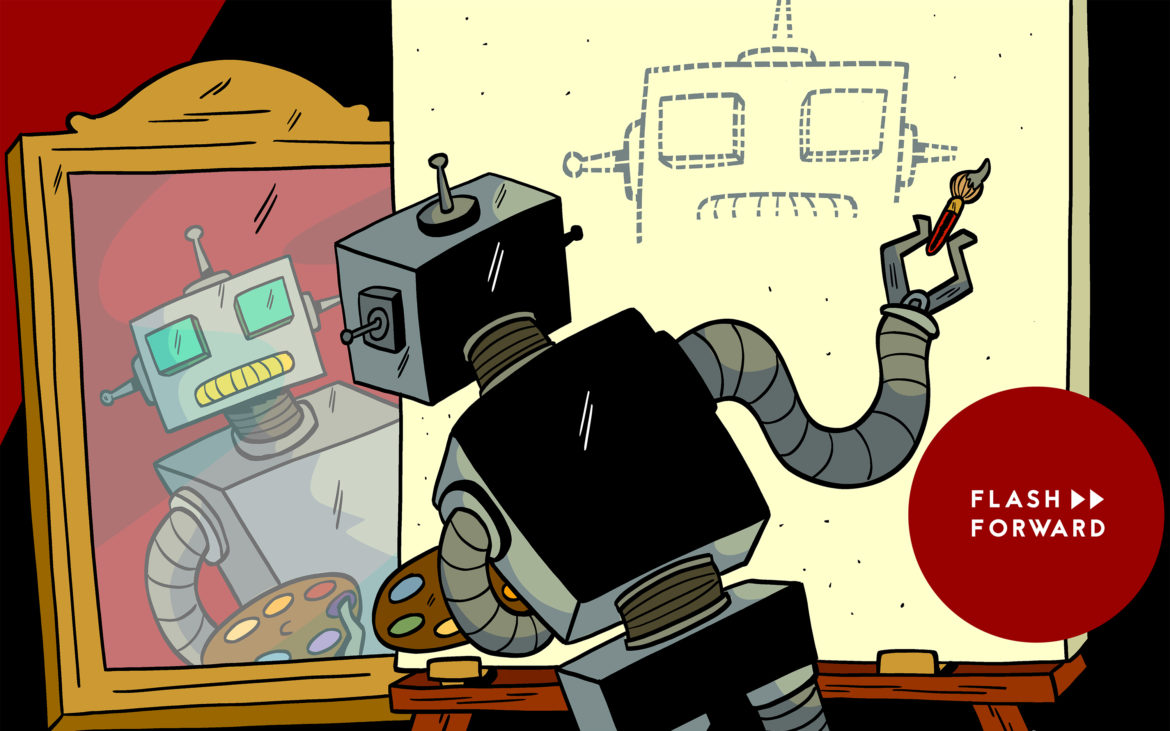
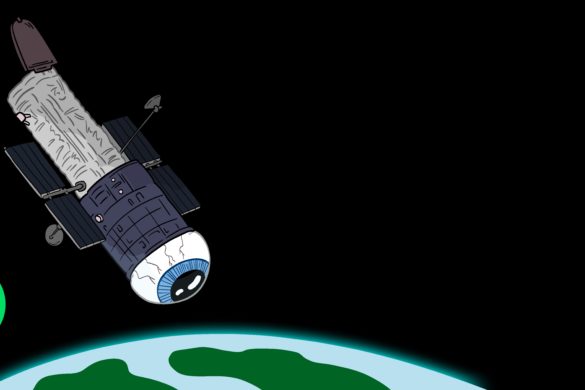
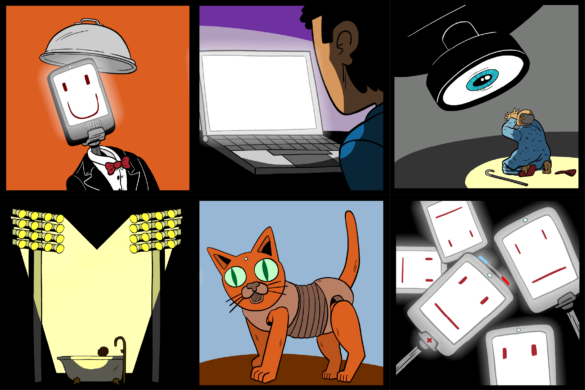

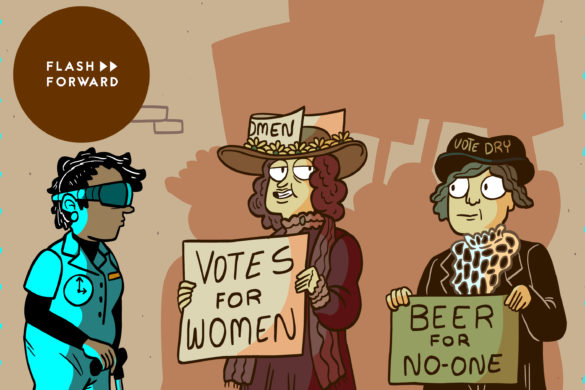
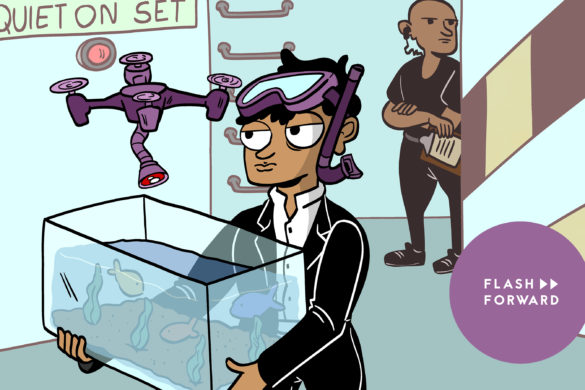
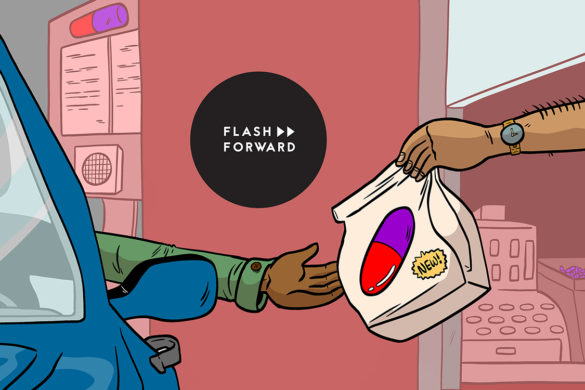
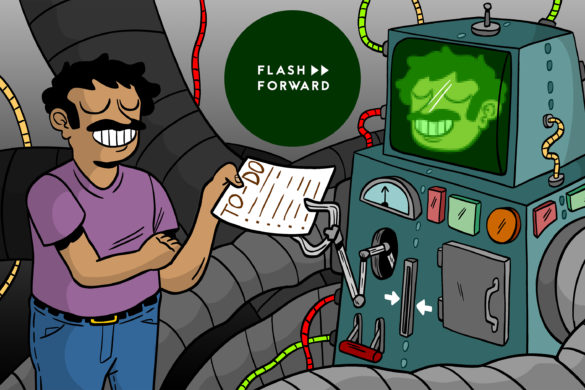
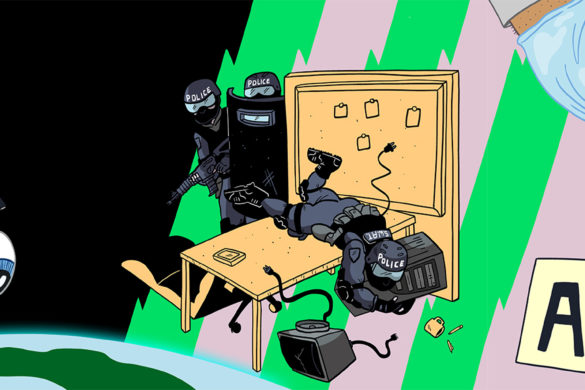

2 comments
Super cool show and this episode was amazing!!
Where can we find larger versions of the Ahmed Elgammel images?